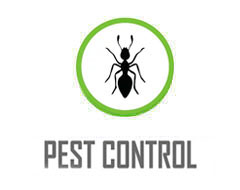Why Do Squirrels Live in Attics?
Squirrels are a very common sight in most cities and towns. While population densities can vary widely from one community to another, it is not uncommon for 50-60 squirrels to live within a square kilometre. Traditionally, squirrels preferred to live in densely forested areas with high amounts of acorn and nut producing trees like walnuts, pines and oaks. A thick and continuous canopy of mature, mixed forest allows squirrels to travel, nest and forage above ground where they are protected from predators.
Squirrels, like any successful urban wildlife species, are incredibly adaptive. As human development has expanded, squirrels have altered their behaviour to thrive in new habitats. Squirrels use telephone and power lines as well as roof tops to travel above ground. While squirrels would traditionally build nests in the forks of trees or cavities they now often make their home inside attics.
WHY DO SQUIRRELS MAKE THEIR DENS INSIDE ATTICS?
Attics and soffit areas make ideal nesting locations for squirrels. Their height provides protection from predators and humans and allows squirrels to remain warm and dry through inclement cold weather. Using their incredibly powerful teeth, squirrels are easily capable of chewing through plastic, aluminum and wood to create holes that allow not only themselves, but also rain and snow, to enter your home. Squirrels are able to gain entry into the attic through any hole larger than two inches. Once inside, their nesting habits and fondness for gnawing down their incisors can cause thousands of dollars in building damage.
One of the primary reasons female squirrels build nests is to raise their young. Squirrels breed twice per year and babies are born after a 44 day gestation period. In general, the first litters of babies are born between late March and early May with the second litters are born in July and August. The average litter contains between two and six babies.
HOW DO SQUIRRELS GET INSIDE ATTICS?
Using their incredibly sharp teeth, squirrels are easily capable of chewing through plastic, aluminum and wood to create holes that allow not only themselves, but also rain and snow, to enter your home. Squirrels are able to gain entry into the attic through any hole larger than two inches. Once inside, their nesting habits and fondness for gnawing down their incisors can cause thousands of dollars in building damage. Some of the most common points of entry squirrels use on a home are:
- Soffit vents
- Roof vents
- Roof edge
- Roof-soffit intersections
- Gable vents
- Wall vents
- Plumbing mats
- Chimneys
WHAT IF THERE ARE BABY SQUIRRELS IN MY ATTIC?
Homeowners living with a squirrel intrusion will report hearing noises primarily during the day when they are at their most active. The peak period for noise and activity is first thing in the morning as the sun rises. Common noises include chewing, scratching, scampering inside the attic and cries that sound similar to the cries of baby birds.
Baby squirrels are born hairless and with their eyes shut. They are immobile for the first six weeks of their lives and will not venture outside the den site for at least eight weeks. In that time, they are capable of creating quite the mess inside your attic. While you will want to get them out as soon as possible, DIY removals almost always result in the separation of mothers from their babies, and in turn much more damage left behind.
To help you deal with that one pesky squirrel or a whole family living inside your attic, we begin our process of a 35-50 point inspection of your property to determine how the squirrels are getting in and if babies are present. We then provide you with a no obligation written quote that details our findings and explains each step we will take to remove the squirrels from your attic. Once they have skedaddled, we will thoroughly clean and deodorize the attic. If you suspect your home or attic is playing host to furry houseguests, give Skedaddle a call at 1.888.592.0387.
CALL US TODAY
1.888.592.0387
OR
Request for Services






FOLLOW US